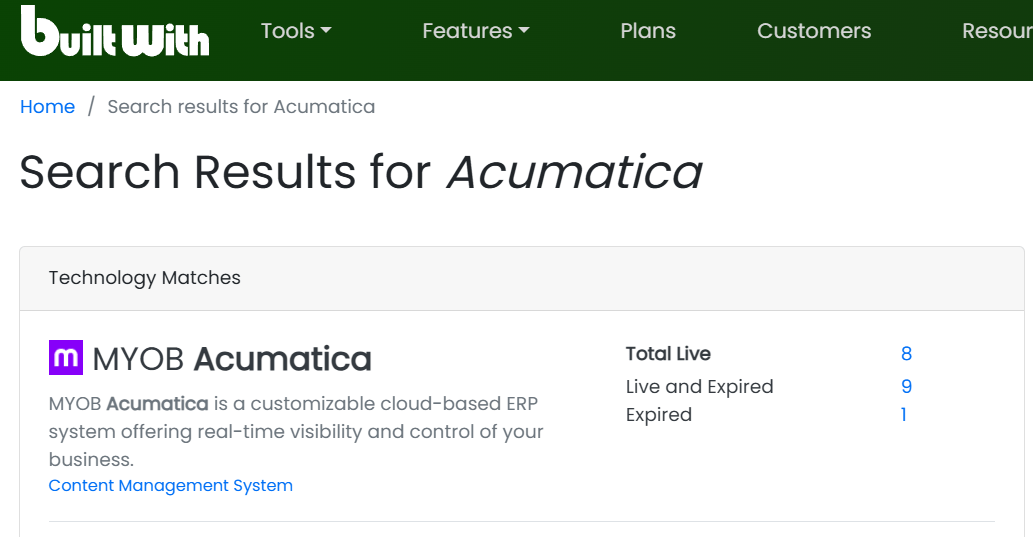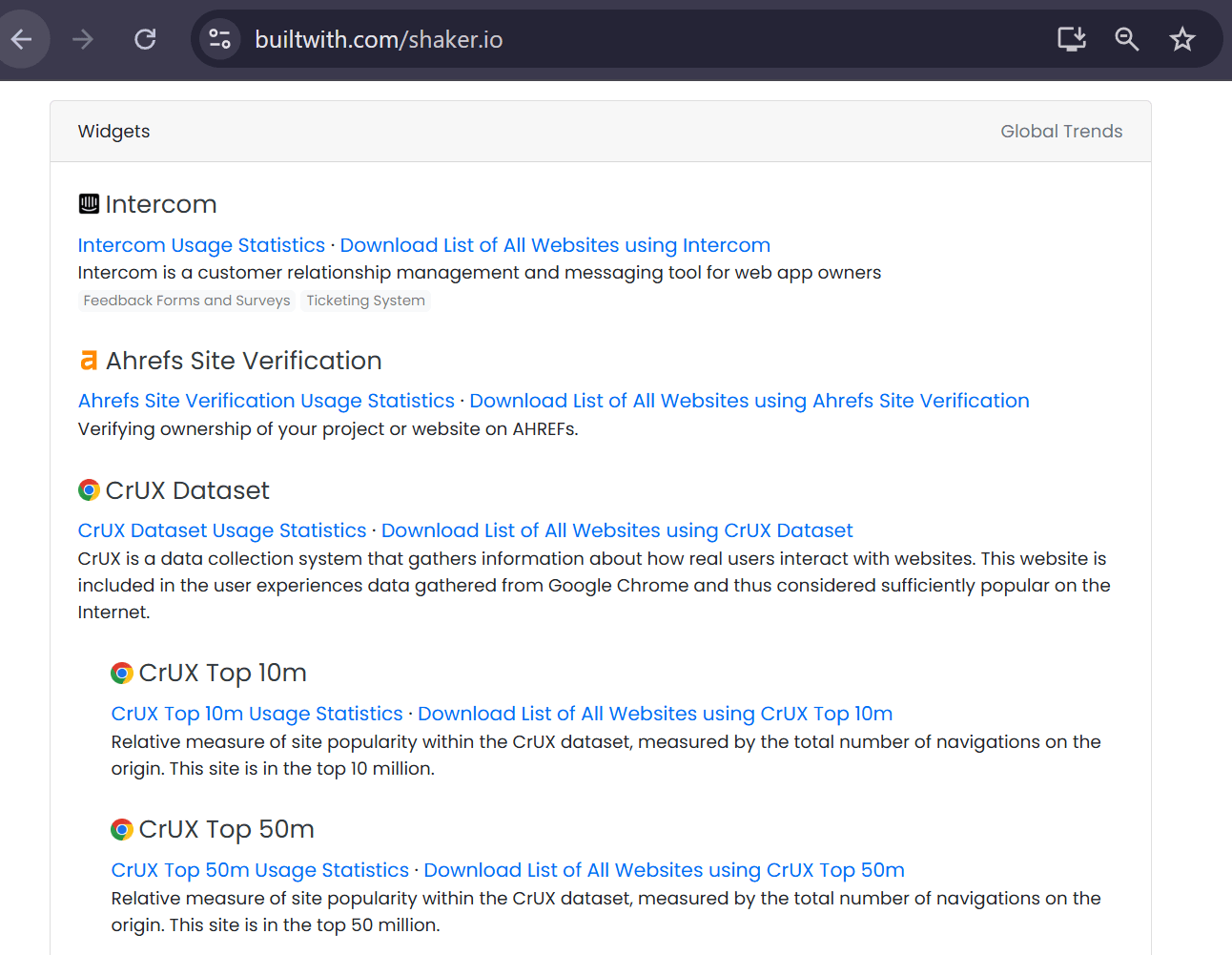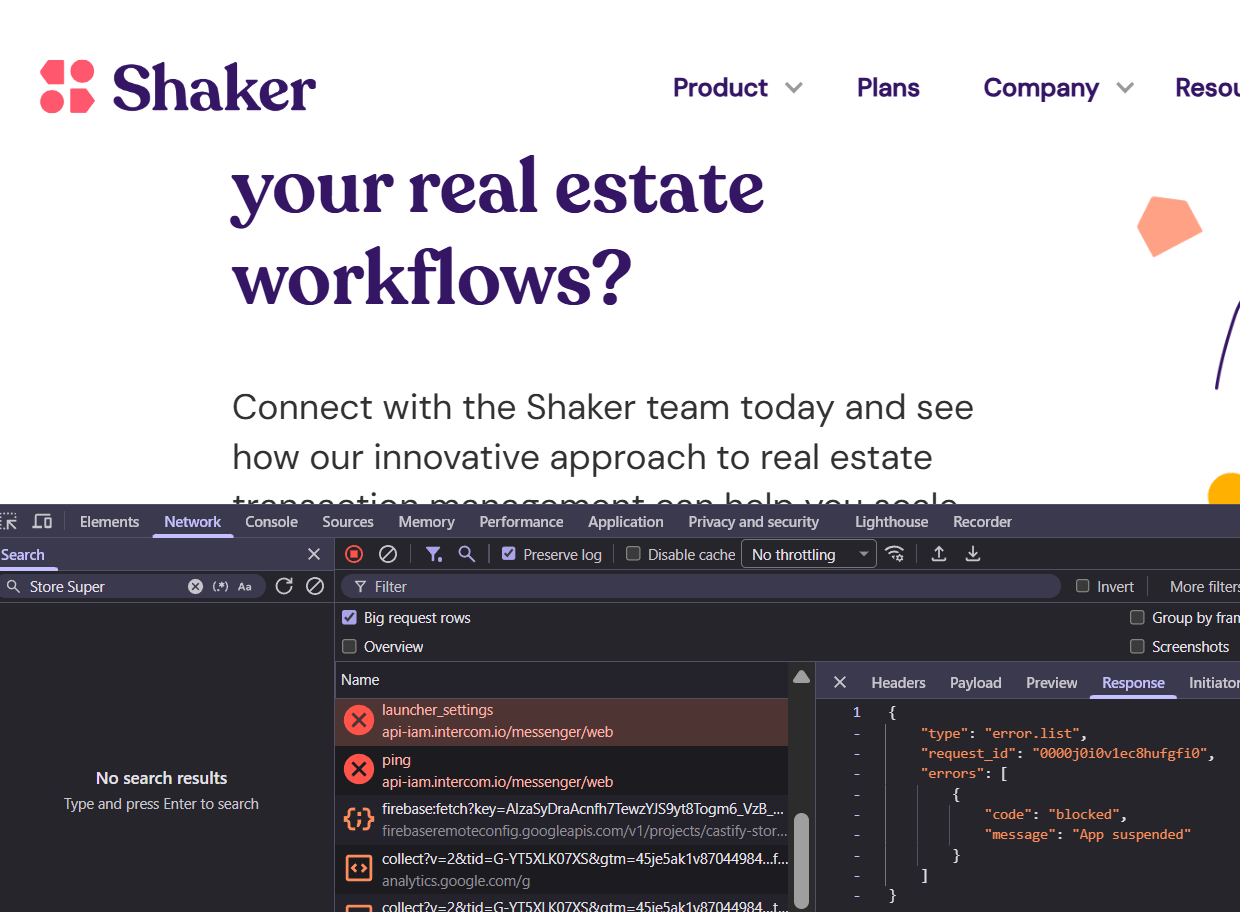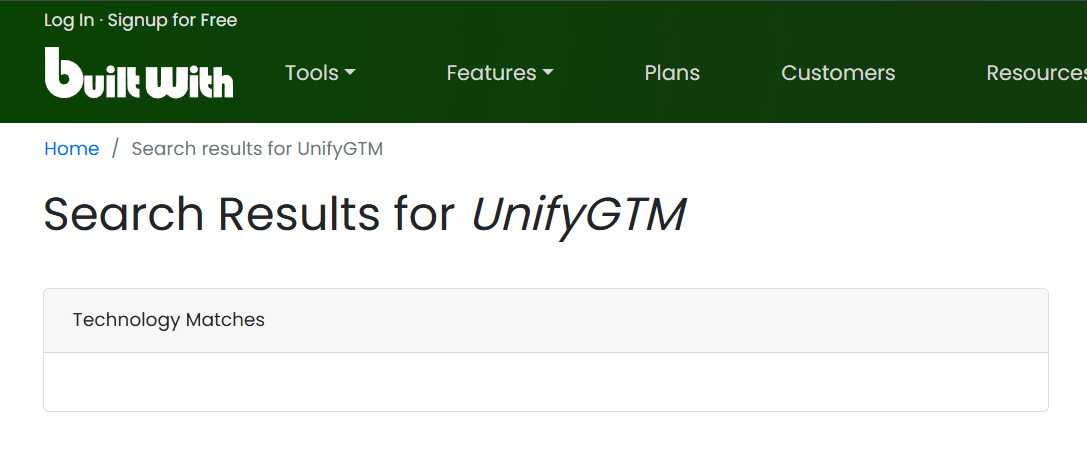Bloomberry vs BuiltWith
Choosing between Bloomberry and BuiltWith? This guide helps you understand the key differences and choose the right technographic intelligence platform for your needs.
Summary
Choose BuiltWith if you just need a static list of websites using popular web technologies. Choose Bloomberry for real-time intelligence on the full B2B tech stack, web products AND non-web products such as CRMs, security tools, devops, AI products and much more.
Feature Comparison
| Bloomberry | BuiltWith | |
|---|---|---|
| 📊 Technology Coverage | Web technologies + 1,100+ non-web B2B products (CRMs, cybersecurity, devops, AI tools, etc.) | Web technologies only (CMS, analytics, advertising pixels) |
| ⏱️ Data Refresh Speed | Real-time updates on technology adoption and churn | Slower updates due to large-scale crawling approach |
| 🔧 Newer Technologies | Tracks emerging B2B tools and platforms actively | Limited coverage of newer technologies |
| 🔌 Access Method | Web interface + API | Web interface + API |
| 💼 Best For | Sales teams targeting companies based on full tech stack + timing of tech changes | Marketing teams focused on web technology adoption |
Key Differences Explained
1. Technology Coverage: Web vs. Non-Web
BuiltWith specializes exclusively in frontend and web technologies. If you're looking for companies using Shopify, WordPress, or have a Facebook ad pixel on their website, BuiltWith is excellent for this use case. However, if you need data on non-web technologies, Builtwith has almost zero reliable data on it. For example, if you're looking to find customers who use Acumatica (an ERP), Builtwith only has 1 result, a Content Management System allegedly named "MYOB Acumatica" (with 8 live websites), as you can see in the image below.

This is where Bloomberry excels, as we cover 1,100+ products across 180 categories including Acumatica (over 1000+ customers detected), Zoom, Microsoft Dynamics, Slack, and other B2B technologies.
2. Advanced Detection of Tech Adoption
BuiltWith can only detect backend products when companies add tracking scripts to their public websites. Here's the problem: most companies start using products long before they add any tracking scripts — if they ever add them at all (ie. never for products like Acumatica).
For example, Eightfold started using Gainsight (a customer success platform) on September. But BuiltWith never detected it yet on Eightfold.ai. They won't detect it until the company finally adds Gainsight's usage tracking to their website — or never, if they don't bother with tracking scripts. Bloomberry, on the other hand detected that Eightfold signed up for Gainsight on September 18th. We detect these customers when they go live, giving you a 2-3 month head start (or catching customers BuiltWith misses entirely). Why? Because we see the actual adoption, not just the tracking script.
3. Advanced Detection of Churn
BuiltWith has weak detection when a company churns from a product. Their churn detection is limited to checking if a script was removed on websites. For example, if a company cancels their Intercom subscription but leaves the script on their site (a common occurrence), BuiltWith will incorrectly show them as an active user. If you detect their browser's network tab, you'll see Intercom fails to load (because the website unsubscribed), but BuiltWith's data doesn't capture this crucial distinction between "script present" and "actively using."
As a concrete example, Builtwith incorrectly detects Intercom as present in Shaker.io, but we detected it as removed on October 1, 2025. The Intercom tag is present in shaker.io, but it stopped working (returns errors). There's no Intercom widget anywhere on their website. They're no longer a customer, and Bloomberry detected that. See the screenshots below.

Builtwith wrongly detects Intercom as active for Shaker.io

We correctly detect Intercom as inactive for Shaker.io
4. Data Freshness
BuiltWith's updates can be slower than ideal, especially for companies that frequently update their tech stacks. If BuiltWith tells you a company uses a technology, that might have been true months ago.
This happens because BuiltWith focuses on crawling as many sites as possible. With tens of millions of websites to crawl, they can't revisit the same site as frequently as needed. Bloomberry's approach prioritizes data freshness and real-time signal detection over sheer volume, as we intelligently prioritize websites that have a higher likelihood of adding technologies over smaller sites (ie a random blogger). As an example, as of this writing Builtwith has not detected that coforge.com started using Segment. However, we already detected they started using Segment on Oct 15, 2025 (a week ago).
5. Coverage of Emerging Technologies
BuiltWith has limited data on newer technologies. As of this writing, they have zero data on companies using UnifyGTM and other emerging sales technologies that have raised millions in venture capital and already serve hundreds of paying customers. Bloomberry actively tracks these newer B2B tools as they gain traction in the market. While BuiltWith shows zero UnifyGTM customers, we track 20-30 new UnifyGTM sign-ups every single month.

When to Choose Each Platform
Choose Bloomberry if you:
- ✓ Need data on non-web B2B technologies
- ✓ Want real-time purchase and churn signals
- ✓ Target companies at the right moment
- ✓ Track emerging B2B tools and platforms
- ✓ Need an API-first approach
Choose BuiltWith if you:
- ✓ Only need web technology data
- ✓ Target e-commerce platforms (Shopify, etc.)
- ✓ Focus on advertising pixels and analytics
- ✓ Prefer a web interface over API
Ready to Try Bloomberry?
Get real-time intelligence on 1,100+ B2B technologies. Track purchases, churn, and tech stack changes as they happen.
Sign Up For Free →Frequently Asked Questions
Can Bloomberry replace BuiltWith?
It depends on your use case. If you just need a list of websites that use a web technology like CMS platforms and advertising pixels, and don't care about freshness, BuiltWith remains the market leader. If you need broader B2B technology intelligence including non-web products and real-time signals, Bloomberry is the better choice.
Does Bloomberry track web technologies too?
Yes, Bloomberry tracks web technologies, such as advertising platforms (ie. Facebook, Twitter, Reddit), martech (Hubspot, Optimizely, VWO), and ecommerce (Shopify, BigCommerce) but it's unique differentiation is its coverage of the full B2B tech stack including non-web products like CRMs, cybersecurity tools, devops platforms, and more.
How does Bloomberry detect real-time purchase and churn events?
Bloomberry uses proprietary detection methods to identify when companies adopt or abandon B2B technologies. This provides sales teams with actionable timing intelligence that static technographic data can't offer.
Is Bloomberry more expensive than BuiltWith?
Bloomberry offers free access to get started. You can sign up, access the API, and download datasets without a credit card. For pricing on larger usage, contact us directly.